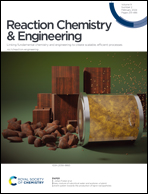Optimized synthesis of functional organosilicon monomers and polymers exploiting new types of CuAAC recoverable heterogeneous catalysts†
Abstract
Organosilicon molecules of both individual and polymer structures are an integral part of modern high-tech industrial production and high technologies. The creation of simple methods for the synthesis of such molecules must meet modern environmental and economic standards. This work demonstrates for the first time the possibility of creating a number of functional organosilicon molecules from organoalkoxysilanes to polydimethylsiloxanes and carbosilane dendrimers using the reaction of Cu(I) catalyzed azide–alkyne cycloaddition (CuAAC) in its heterogeneous version. All processes were carried out until complete conversion of functional groups in the composition of organosilicon molecules without the use of solvents or amines and at a relatively low temperature – 60 °C. An important result of this work is the study of the leaching of copper from a heterogeneous catalyst into the final polysiloxanes and the assessment of their potential toxicity towards biological cells in comparison with polysiloxane modified by the CuAAC reaction catalyzed by a copper salt(I).



 Please wait while we load your content...
Please wait while we load your content...